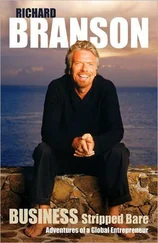Why start our voyages from Necker, my Caribbean island? Apart from being a beautiful location from which to explore local sea life and coral, the island is just a few miles from the Atlantic’s deepest trench, the Puerto Rican Trench. This stretch of water has never been explored, and I hope within a year to have travelled to the darkest depths of this great sea valley farther down than Everest is high.
For me, there are echoes of the great explorers from the era of Sir Francis Drake – the men who first discovered the Virgin Islands. I am keen for our submarines to emulate the feats of Drake and chart the deep local waters acre by acre, trench by trench, valley by valley.
As an added bonus, we may even find treasure. The Caribbean is littered with shipwrecks, many laden with bounty from South and Central America. Some say there may be more treasure and gold below the sea than above. I have a map showing more than two hundred shipwrecks within twenty miles of Necker. Some may be lurking in relatively shallow waters, hidden by the years; others may be much further down. We will be looking for them, especially now we have developed our submarines to go all the way down.
As I look over the ocean from my hammock on Necker, I am incredibly excited by the future opportunity to look under it. Besides discovering new species, (they sat 80 per cent are undiscovered) charting the trenches and finding treasure, we may even find the lost city of Atlantis…you just never know!
PS In Jules Verne’s book, the ‘twenty thousand leagues’ refers to the distance travelled, not the depth. Just as well when you consider that 20,000 leagues is more than six times the diameter of the Earth!
Let them have at it!
This may sound like a truism, but it has to be said: it takes an engaged, motivated and committed workforce to deliver a first-class product or service and build a successful, sustainable enterprise. Empowering employees so that they can make good decisions is one of an entrepreneur’s most important tasks.
This means that you must build a corporate comfort zone in which your people can confidently express themselves and display the courage of their own convictions. From the business’s first days, you must ensure they aren’t constrained by an overly rigid structure, micromanagement or overregulation. While guidelines are useful for establishing a framework for the tasks ahead, a hard-shelled setup will hinder creativity and risk-taking. It will instead quickly lead to mindless repetition, lack of motivation and a falling off in standards.
If you can encourage and trust your staff to use common sense, you will find that over time their solutions to problems will become more innovative, rather than less so. Make sure that experimentation is encouraged and employees aren’t afraid to make mistakes. In fact, your goal should be more than merely encouraging your employees to use common sense. Ultimately, you want their approach and solutions to become entrepreneurial or, more accurately, intrapreneurial.
One of many intrapreneurial teams within our group is led by Les Payne on Virgin Australia’s engineering and maintenance staff. He keeps an eye on all aspects of ground safety, including the wooden chocks used to hold plane wheels in place when they are parked at the gate. About five years ago, he noticed that in heavy rain the chocks did not stay in place, and that this equipment also wore out quickly.
Les and his colleague Ian Scott decided to redesign the chocks. They soon hit on a more durable and environmentally friendly material: plastic that had been recycled locally. The price would be the same as the traditional wooden ones, but the chocks would last at least six times longer.
Over time, we have been replacing the one thousand timber chocks in use across the Virgin Australia network with the recycled plastic version. We were so pleased with this simple but effective measure that we reported it in internal newsletters, drafted memos to help raise awareness and also feted Les and team at the Virgin Group’s Stars of the Year dinner for successfully demonstrating how helping the environment can also help the bottom line. In 2006, both Les and Ian received an industry award for this achievement as well.
The steps to constructing a creative and free-thinking workplace are quite simple, but it really has to start at the top. CEOs need to lead by example, by being visible and approachable in their role as the lead creative problem-solver. Give out your email address and phone number, listen carefully to employees (as I frequently point out, I always carry a notebook so I can jot things down), follow up on all problems, act on the best suggestions and celebrate others’ creative milestones and intrapreneurial achievements.
When Virgin was small and housed in cramped offices, it was much easier for me to keep in touch with employees, but nowadays I have to rely on a team of dozens of chief executives who drive forward the various businesses within the Virgin Group as our ambassadors and advocates for the Virgin culture we have created.
Whether you are running a small company or a large one, there are employees you may not get to speak to often, and whom you must rely on others to supervise. Things to look for in your managers: do they give out their contact info? Do they have little black books of their own? Can they tell you about employees’ good ideas and which of the best ones they acted on? Do they promote intrapreneurship within their teams? Are they intrapreneurs themselves?
Such switches are very helpful in broadening senior team members’ experience and helping them to remember that getting things done the conventional way is not necessarily the best way. When your top managers are true intrapreneurs, you can be sure that you are on your way to building a committed, engaged, creative workforce guided by common sense and a spirit of adventure.
Chocks away!
Ageing brings many benefits
I am, as I said in the Introduction, a huge fan of Australia and Australians. Australia always strikes me as a young and vital nation so it is interesting that the following question came to me from Down Under.
Q: In Australia there is often an overt bias against employing older workers. In a recent business magazine article, a recruitment consultant stated he doesn’t look at anybody over thirty-five.
These are some of the preconceptions often aired: older workers can’t change; they are not as creative; they can’t think laterally; they are not open to learning; they cost more to hire.
What is your approach to hiring older workers? If you were looking for a position, how would you look to overcome the ageism barrier?
—C. Goldsworthy, Australia
A:Whoever that recruitment consultant is they deserve to be looking for a job themselves for making such a ridiculous confession. It is an especially appropriate time for me to address the issue of age and the workforce. I know this fact will surprise you (says he with tongue planted firmly in cheek) but I myself recently turned sixty.
The same year that I hit the big six-oh I also ran my first ever marathon and not only finished it but did so in just under five hours. In the same year I tried to set a record as the oldest person to kite surf across the English Channel; however, high winds (and waves) forced me to abandon the attempt – but I’ll be back!
Challenges such as these were once associated with younger people but nowadays people are living longer, much more active lives, so retiring at a relatively young age is no longer necessary. If people look after themselves with regular exercise and a good diet, there is no reason why they shouldn’t keep going forever: my grandmother played golf almost every day of her life and recorded a hole in one at the age of ninety!
Читать дальше












